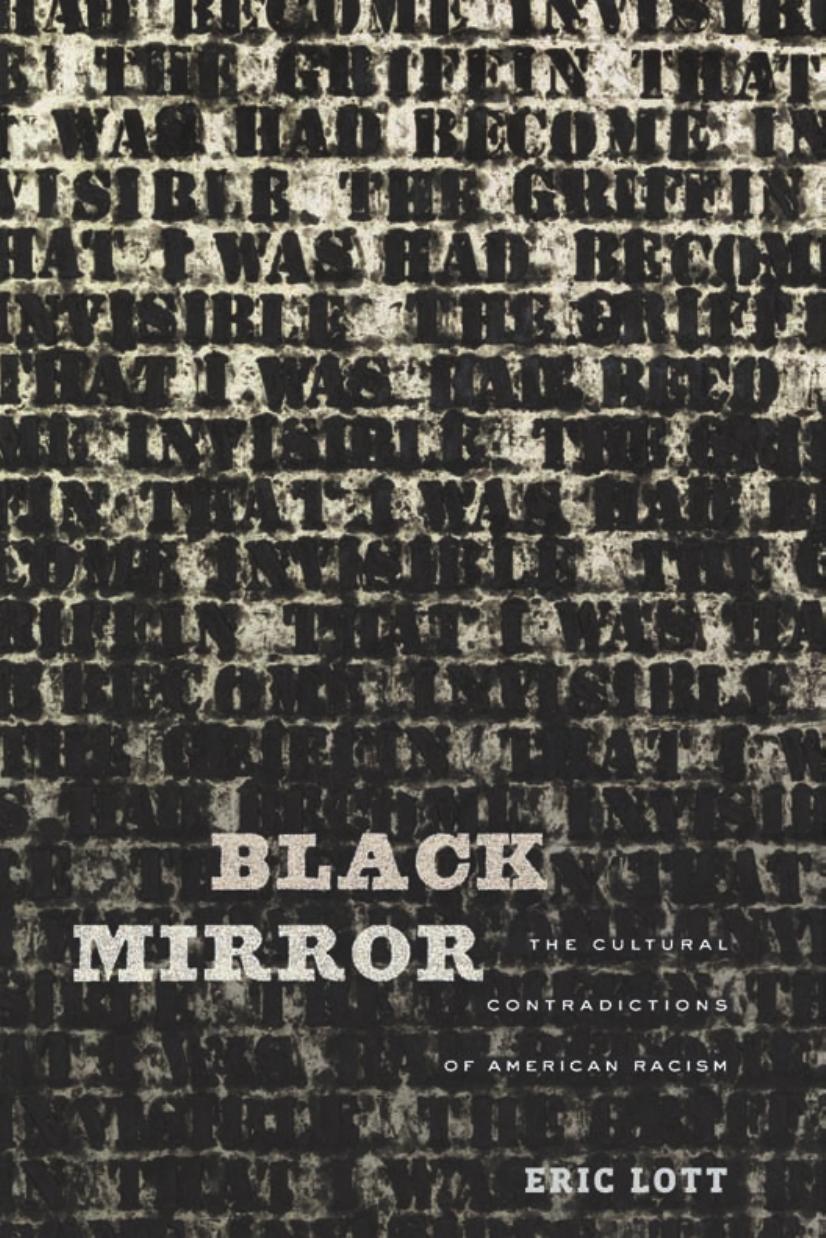Black Mirror: The Cultural Contradictions of American Racism by Eric Lott

Author:Eric Lott [Lott, Eric]
Language: eng
Format: epub, pdf
Tags: history, United States, 20th Century, Social Science, Ethnic Studies, American, African American & Black Studies, popular culture, Discrimination, Media Studies
ISBN: 9780674967717
Google: uigzDwAAQBAJ
Publisher: Harvard University Press
Published: 2017-09-25T00:17:13.554522+00:00
NORMAN MAILERâS âTHE WHITE NEGROâ (1957), an extended riff whose mythologies are as telling as its analysis, is the garish postâWorld War II advertisement for this poseâfreedom dreams, hipster division. As none other than Norman Podhoretz observed in 1958 of the white-Negro discourse of which Mailerâs essay was the centerpiece: âI doubt if a more idyllic picture of Negro life has been painted since certain southern ideologues tried to convince the world that things were just fine as fine could be for the slaves on the old plantation.â21 Not a postdating or mere continuation of antebellum racial cross-dressing but its genealogical legacy, this postwar discourseâMezzrow, the Beat writers, Elvis Presleyâs early career, Mailerâs hipster, Griffinâs Black Like Me, and othersâdid (in all its racial âmodernityâ) reproduce the obsessions of certain nineteenth-century northern ideologues but in racially sympathetic form. To the extent that these obsessions werenât wholly continuous with the dominant culture in the ensuing years of protest, they returned as farce in the late 1960s: Elvisâs 1968 comeback TV special, Grace Halsellâs Soul Sister (1969) (Griffinâs second-generation simulacrum), and, in a crowning blow (to which I will return), Melvin Van Peeblesâs Watermelon Man (1970)âin which Godfrey Cambridge in whiteface plays a suburban racist who wakes up one morning to find himself turned black. The steady backbeat of this trope and of white Negroism generally since thenâthe movie Soul Man (1986); black-folk-filled music videos and performances from Madonna to Miley Cyrus; Lee Atwaterâs blues Republicanism and Bill Clintonâs Elvis ticket; Quentin Tarantino movies and white-Negro parodies (e.g., Malibuâs Most Wanted [2003]); Vanilla Ice, Robin Thicke, and Iggy Azaleaâis as bewildering in its ubiquity as in its ideological variousness, but these instances and countless others only confirm the original template.22
Mailerâs piece codifies the renegade ethic of male sexuality conceived out of and projected onto black menâand always driven by a rather transparent eroticizing of themâthat informs the more than metaphorical racial romance underlying one construction of American whiteness: âKnowing in the cells of his existence that life was war, nothing but war, the Negro (all exceptions admitted) could rarely afford the sophisticated inhibitions of civilization, and so he kept for his survival the art of the primitive, he lived in the enormous present, he subsisted for his Saturday night kicks, relinquishing the pleasures of the mind for the more obligatory pleasures of the body, and in his music he gave voice to the character and quality of his existence, to his rage and the infinite variations of joy, lust, languor, growl, cramp, pinch, scream and despair of his orgasm.â23 Mailer and other male white Negroes inherited an affective paradigm whose self-valorizing marginality and distinction require a virtual impersonation of black manhood. It is revealing that while the liberatory preoccupations of Mailerâs existential errand are inexactly calibrated with either Griffinâs Black Like Me or Elvis Presley, the shape of this white mythology looks pretty much the same in all cases. Its resonance is, for instance, succinctly articulated in white guitarist Scotty Mooreâs gleeful
Download
Black Mirror: The Cultural Contradictions of American Racism by Eric Lott.pdf
This site does not store any files on its server. We only index and link to content provided by other sites. Please contact the content providers to delete copyright contents if any and email us, we'll remove relevant links or contents immediately.
| Africa | Americas |
| Arctic & Antarctica | Asia |
| Australia & Oceania | Europe |
| Middle East | Russia |
| United States | World |
| Ancient Civilizations | Military |
| Historical Study & Educational Resources |
Machine Learning at Scale with H2O by Gregory Keys | David Whiting(4186)
Never by Ken Follett(3795)
Fairy Tale by Stephen King(3220)
The Man Who Died Twice by Richard Osman(2997)
Oathbringer (The Stormlight Archive, Book 3) by Brandon Sanderson(2888)
Will by Will Smith(2794)
Rationality by Steven Pinker(2291)
The Dark Hours by Michael Connelly(2246)
Can't Hurt Me: Master Your Mind and Defy the Odds - Clean Edition by David Goggins(2228)
The Dawn of Everything: A New History of Humanity by David Graeber & David Wengrow(2122)
Friends, Lovers, and the Big Terrible Thing by Matthew Perry(2120)
Principles for Dealing With the Changing World Order: Why Nations Succeed and Fail by Ray Dalio(1974)
HBR's 10 Must Reads 2022 by Harvard Business Review(1778)
A Short History of War by Jeremy Black(1763)
Go Tell the Bees That I Am Gone by Diana Gabaldon(1687)
515945210 by Unknown(1600)
A Game of Thrones (The Illustrated Edition) by George R. R. Martin(1591)
Kingdom of Ash by Maas Sarah J(1529)
443319537 by Unknown(1470)
